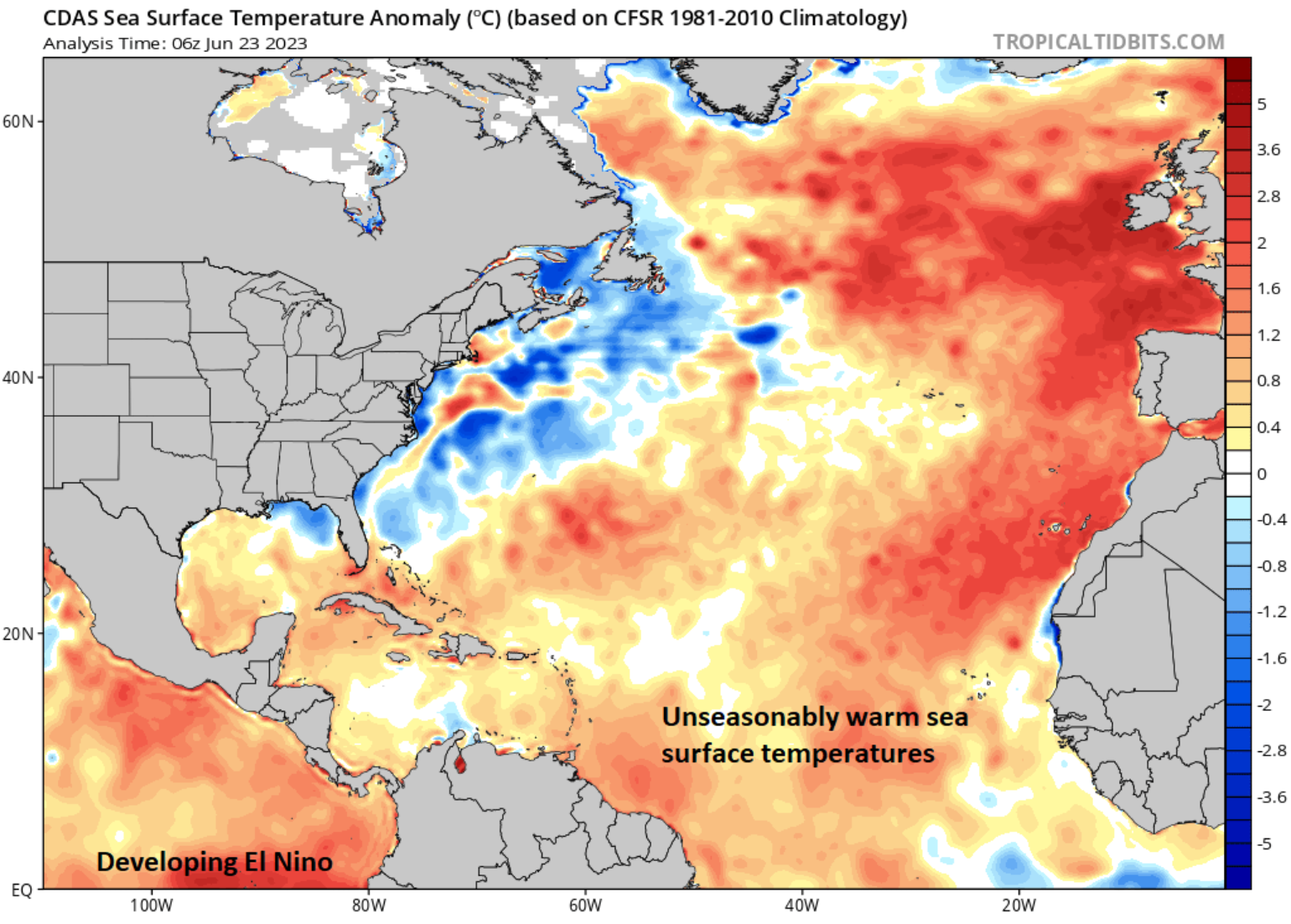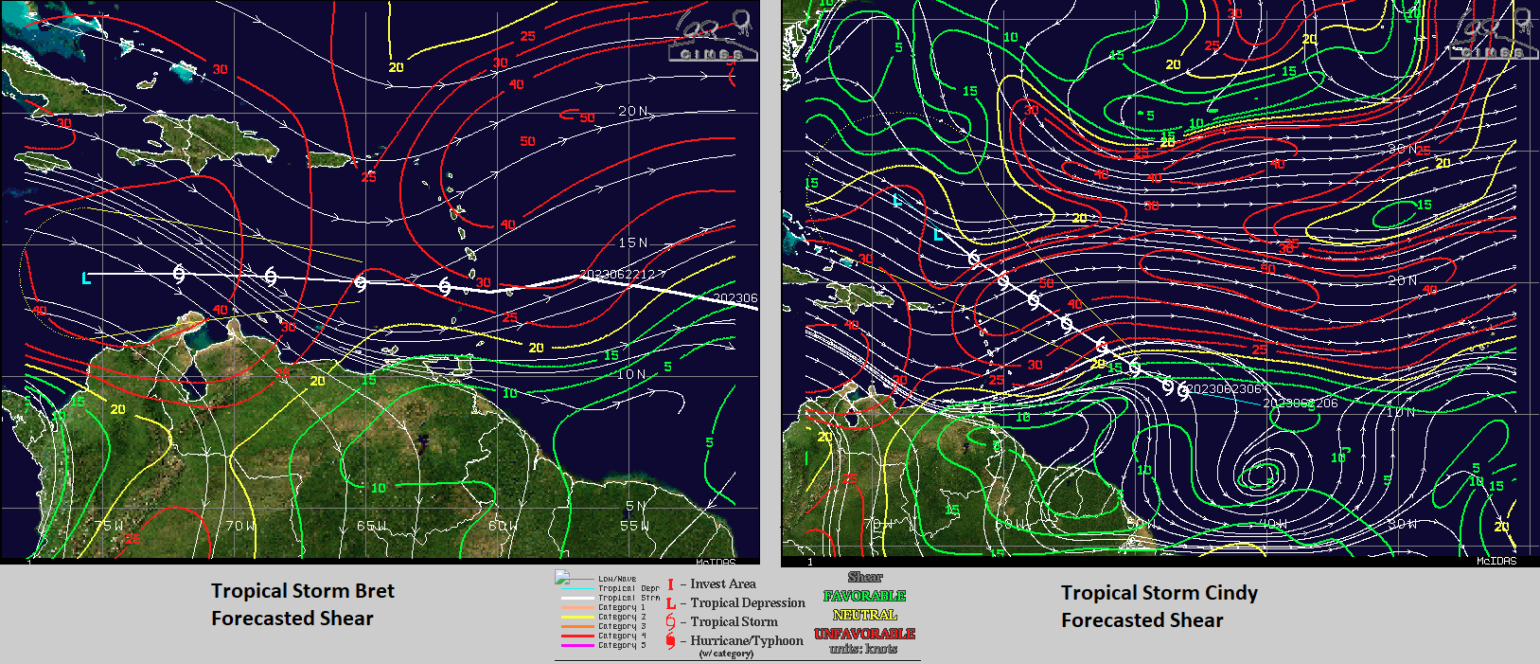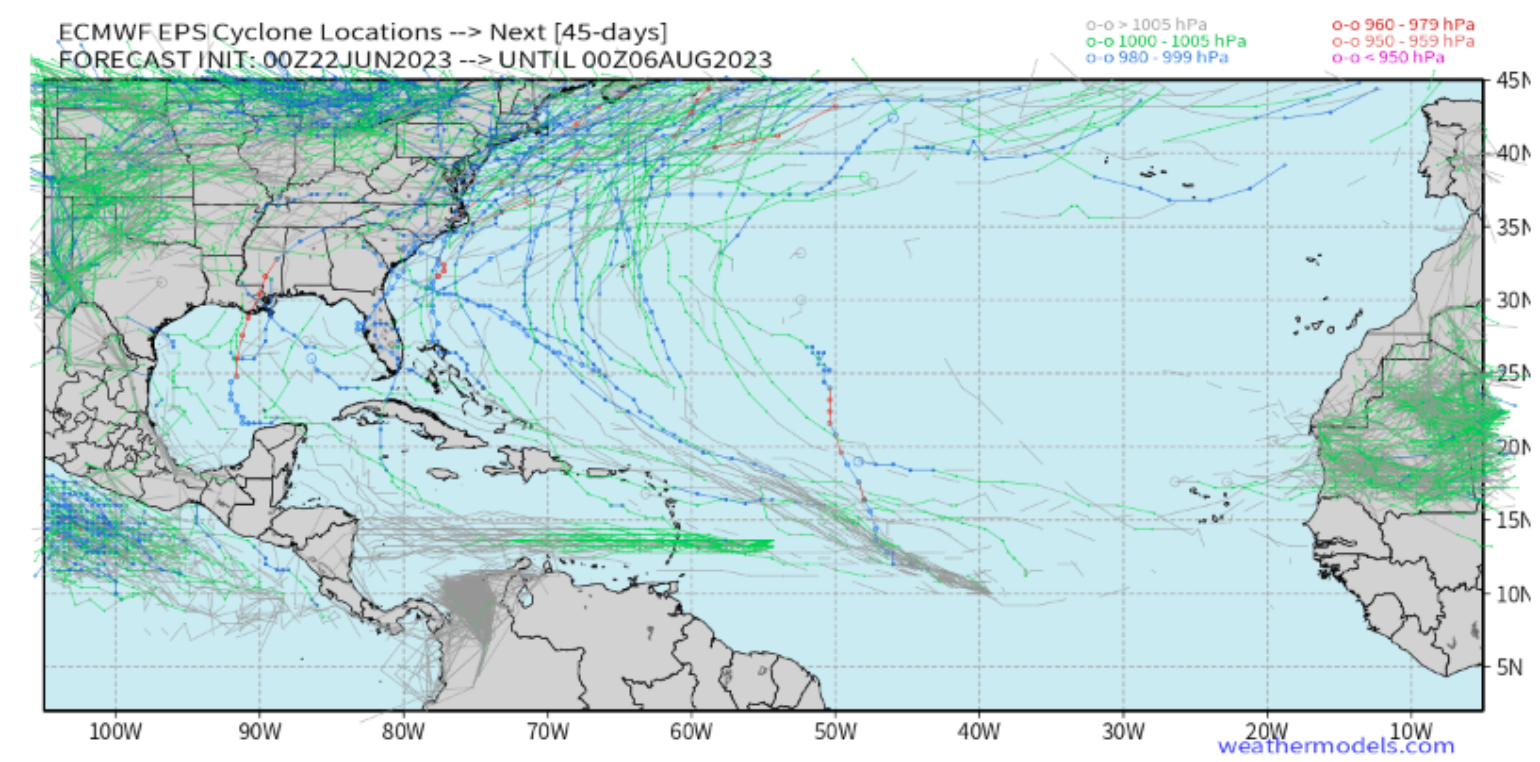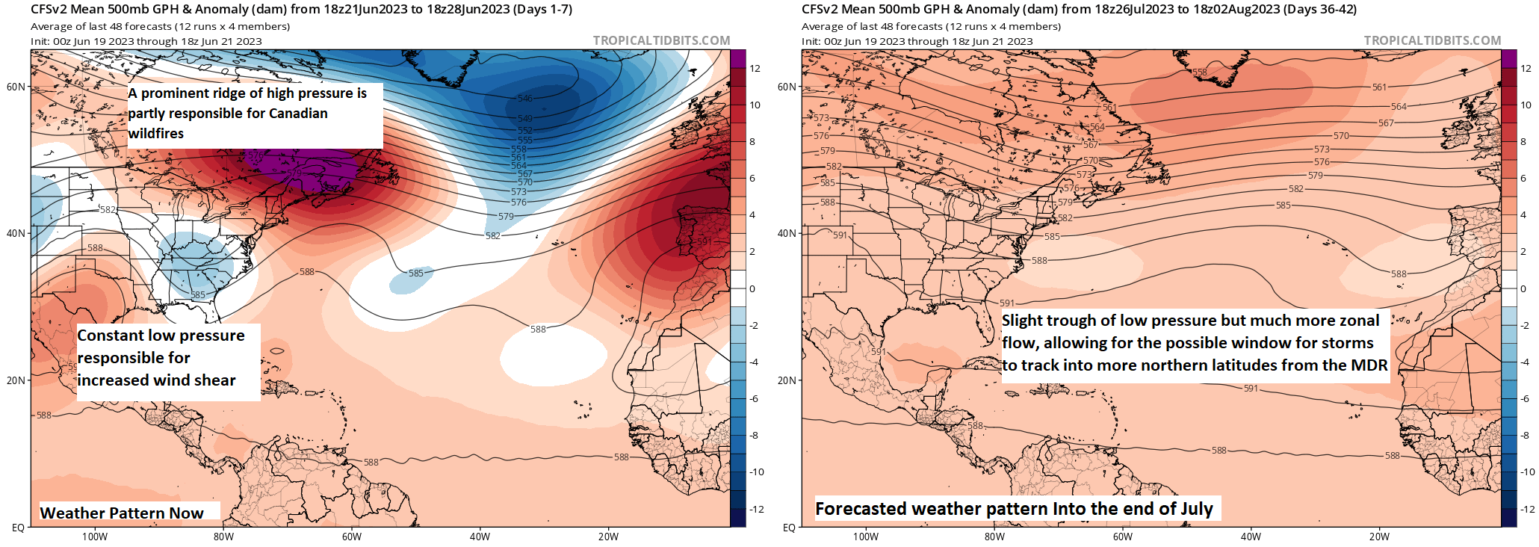BMS Tropical Update - 6/23/2023
Mother Nature cannot seem to decide if it is March or August when one looks at the ongoing extreme weather events across North America. From extreme weather in the Central Plains with the bullseye on Texas that rivaled some severe weather outbreaks in March and April; to a line of tropical waves in the Main Development Region (MDR) that resembles what should be experienced in August and September. The leading tropical wave is the third named storm of the 2023 Atlantic hurricane season, Tropical Storm Bret. This is the 7th earliest 3rd named storm on record. If you remember starting the 2023 Atlantic hurricane season on June 1st, Arlene formed in the Gulf of Mexico and was a tropical storm for 18 hours before getting sheared apart from high wind shear in the region. However, this short-lived storm once again highlights the fact that there is an increasing number of short-lived named storms over the last decade in any given hurricane season, adding to the total storm count of that particular year. You might have missed the news that back in January, a subtropical storm in the North Atlantic was not identified in real-time but later upgraded to a named storm. This storm will count as an unnamed named storm bringing the total of named storms to three this season. Yesterday Tropical Storm Cindy was classified behind Bret and will take a slightly different track to the north of Bret. This is the only time in recorded history that two named storms have formed in June in the MDR and the first time since 1968 that two named storms have been simultaneously active in June.
Bret is unusual because it has formed in the MDR of the tropical Atlantic and is the farthest east that a tropical storm has formed in this area this early in the calendar year.
In our May BMS Tropical Update, we discussed the wrestling match between El Niño (Chris Farley) and the warm sea surface temperatures (SST). The battle royal has now started between the developing El Niño in the Central Pacific, often providing storm-punishing wind shear in the western Caribbean and the southern Gulf of Mexico. The other contender throwing its weight around right away is the exceptionally warm SST occurring around the Atlantic Basin within the MDR, recently seeing the warmest SST ever recorded this early in the season.

Combining these warm SSTs with an active African wave train, makes for an exciting round one. In addition, there is a chance one or two more areas of tropical convection will develop over the next two weeks before the MDR shuts down for a few weeks. There will still be the risk of what we call Home Grown tropical development over the course of the season near the U.S. Coastline. Often, these trouble areas can be along the Gulf Coast or off the Carolina Coast, which are usually a result of remnant low-pressure systems or storm systems that have tracked across the eastern U.S.
As round one plays out, the NHC came out bullish in its initial forecast of Bret being a hurricane as it entered the Caribbean. However, it has since backed down on the (GFS) (America) models, the clear leader in the ECMWF forecast model. Bret will quickly succumb to the wind shear in the western Caribbean. Tropical Storm Cindy will also be impacted by wind shear, but since it is taking a more northerly track, the El Niño base wind shear might not be as strong. Additionally, Cindy might have a fighting chance to become stronger late next week as it tracks toward Bermuda.

Will the round one battle of warm SST and El Niño based wind shear become a recurring theme this season as the battle continues? We will see. We know if storms can come out of the MDR and track further north, the shear should not be as bad, and there could be life to these storms if they can track toward the Bahamas to Bermuda. Cindy might become a good case study for this theory. But, the North American weather pattern tends to need a ridge of high pressure along the east coast, which has not been the case recently. This explains the cooler conditions and the general storminess across Florida as well.

Of course, the overall weather pattern can change. The North American weather pattern suggests constant troughs of low pressure over the East Coast, which is undoubtedly not a good pattern when you have tropical cyclone activity in the Atlantic basin. This could change as the calendar flips to the peak of the season into August and September, during which currently, long-range forecasts show a ridge of high pressure. This high pressure would certainly not be a friendly pattern for the insurance industry if something were to be named in the MDR.

The early season MDR activity is unprecedented but does not mean the season will be hyperactive; 2021, 2020, 2016, 2012, 1959, and 1887 are years in which three named storms formed earlier in the season than Bret formation. In fact, the bigger concern might be the year in which named storms have formed in the month of June (1933, 1979, and 2017). These analog years for early June development were not kind years to the insurance industry. But none of these years are analogs to the ongoing wrestling match with the climate forcers of El Niño and warm SST, so this is truly a wildcard match that is playing out and is an important data point in our understanding of overall activity and the spread of tracks. The extreme warmth of the SST across the MDR likely will not go away as we head into August and September, and this will continue to give tropical waves a better chance of development during the peak of the season.
What might happen this year is we have warm enough waters in the MDR to promote genesis initially, but storms do not rack up Accumulated Cyclone Energy and remain fairly weak. The long-range weather pattern suggests the Pacific Ocean should become alive with activity, and the Atlantic likely will not become more active until the 3rd week of July or the first week of August.
In summary, round one is ongoing, and we are seeing how the battle might unfold this season. There is almost zero impact on the insurance industry at this time. There will be plenty of forecast model watching between now and November, and the ECMWF model has the upper hand and is getting an upgrade next week, which can either be a good thing or a bad thing, so that needs to be watched as well.
